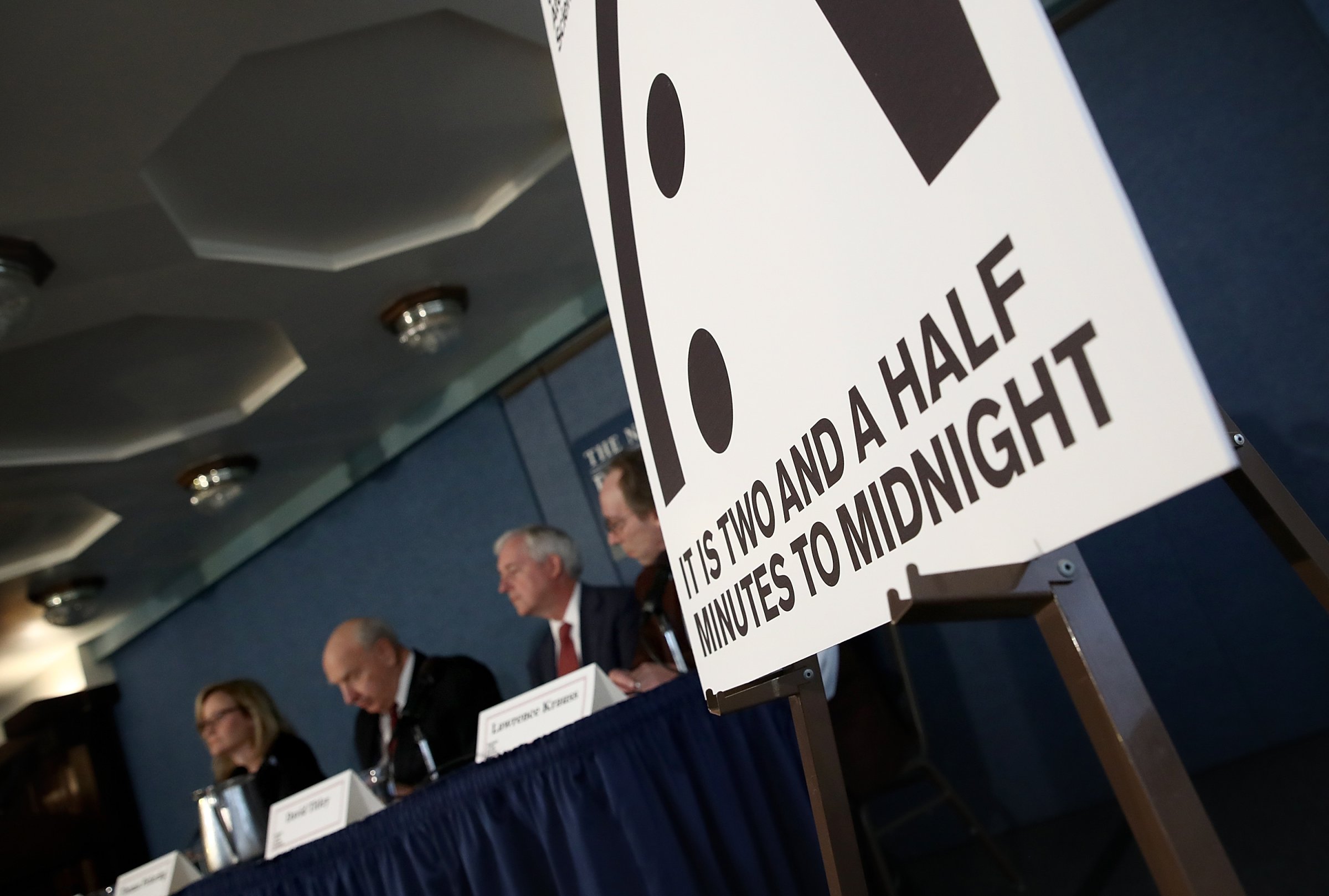
The Bulletin of the Atomic Scientists moved the doomsday clock closer to midnight on Thursday morning, warning the world that it is as close to catastrophe in 2018 as it has ever been.
Scientists cited growing nuclear threats, climate change and a lack of trust in political institutions as they set the doomsday clock at two minutes to midnight — 30 seconds closer than it was last year.
“The world is not only more dangerous now than it was a year ago; it is as threatening as it has been since World War II,” Lawrence Krauss and Robert Rosner of the Bulletin of the Atomic Scientists wrote in a Washington Post column on Thursday, referencing President Trump’s repeated threats of war against North Korean leader Kim Jong Un, as well as his reversal of the Obama Administration’s efforts to stop climate change.
“We are moving the clock forward again by 30 seconds, due to the failure of President Trump and other world leaders to deal with looming threats of nuclear war and climate change,” they wrote.
The doomsday clock — which tracks the world’s vulnerability to existential threats — was last updated on Jan. 26, 2017 to stand at two-and-a-half minutes to midnight, inching closer to midnight largely because of Trump’s election. In the 2017 announcement, scientists warned of the threats posed by nuclear weapons, climate change and global disinformation campaigns.
“In 2017, we find the danger to be even greater, the need for action more urgent,” the scientists wrote last year. “It is two and a half minutes to midnight, the Clock is ticking, global danger looms. Wise public officials should act immediately, guiding humanity away from the brink. If they do not, wise citizens must step forward and lead the way.”
The Bulletin of Atomic Scientists, founded by scientists who helped develop the first atomic weapons, has been moving the clock closer to and further from midnight for more than 70 years.
The clock was first set in 1947 at seven minutes to midnight, serving as a warning about nuclear weapons. It has fluctuated since then, coming closest to midnight — just two minutes away — in 1953, after the U.S. tested the first hydrogen bomb, and now in 2018. In their 1953 announcement, the atomic scientists wrote: “Only a few more swings of the pendulum, and, from Moscow to Chicago, atomic explosions will strike midnight for Western civilization.”
More Must-Reads From TIME
- The 100 Most Influential People of 2024
- Coco Gauff Is Playing for Herself Now
- Scenes From Pro-Palestinian Encampments Across U.S. Universities
- 6 Compliments That Land Every Time
- If You're Dating Right Now , You're Brave: Column
- The AI That Could Heal a Divided Internet
- Fallout Is a Brilliant Model for the Future of Video Game Adaptations
- Want Weekly Recs on What to Watch, Read, and More? Sign Up for Worth Your Time
Write to Katie Reilly at Katie.Reilly@time.com